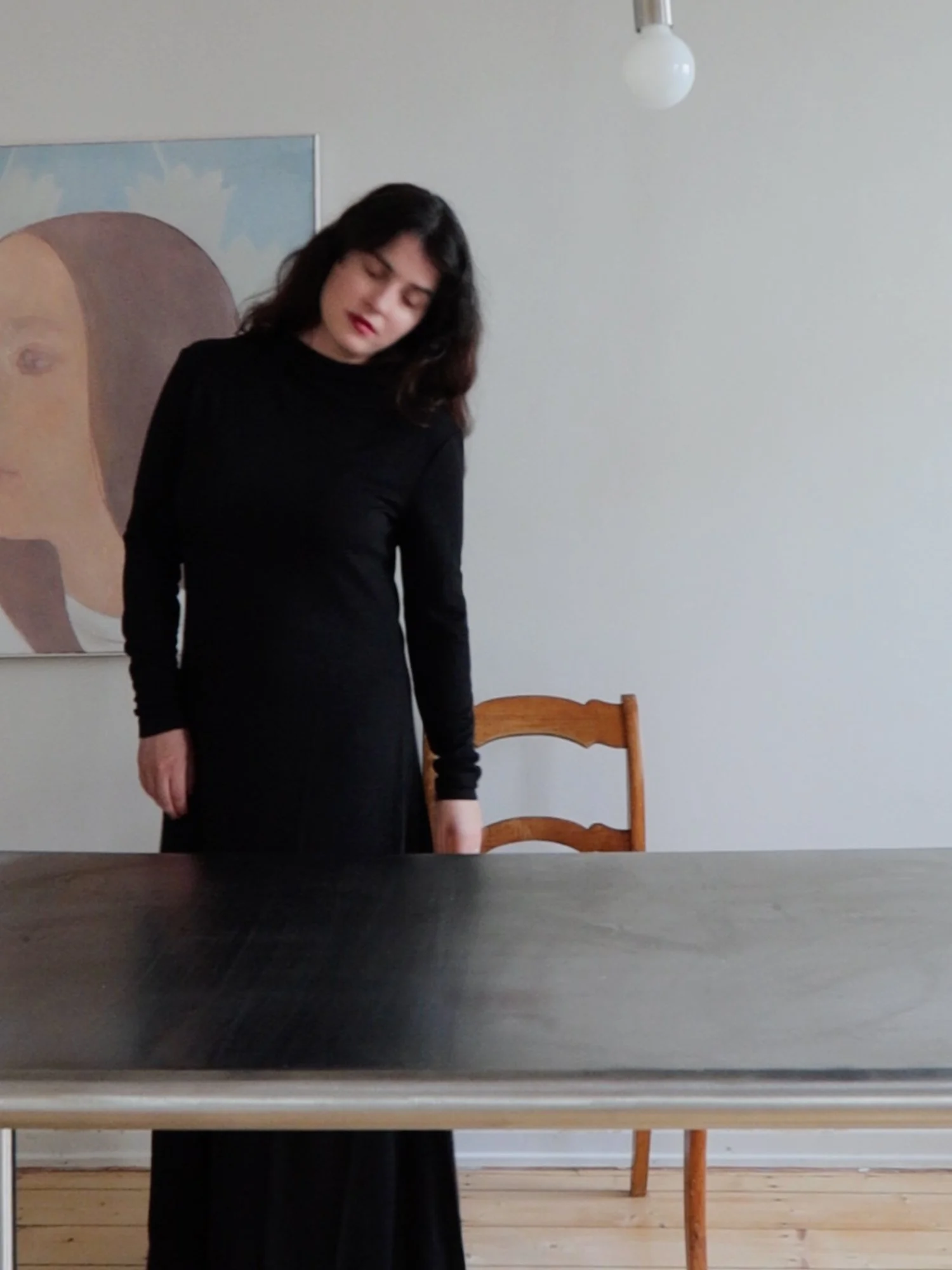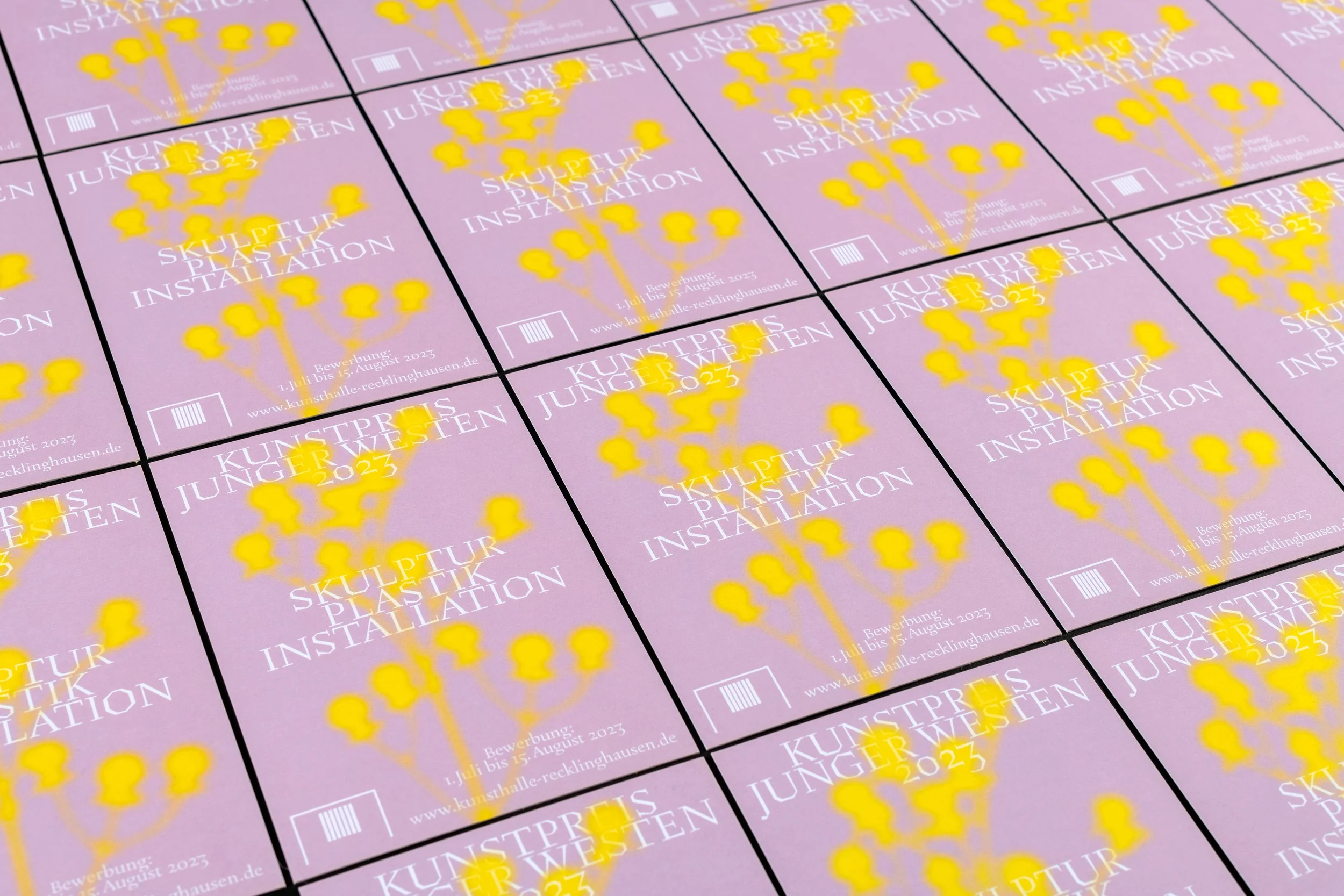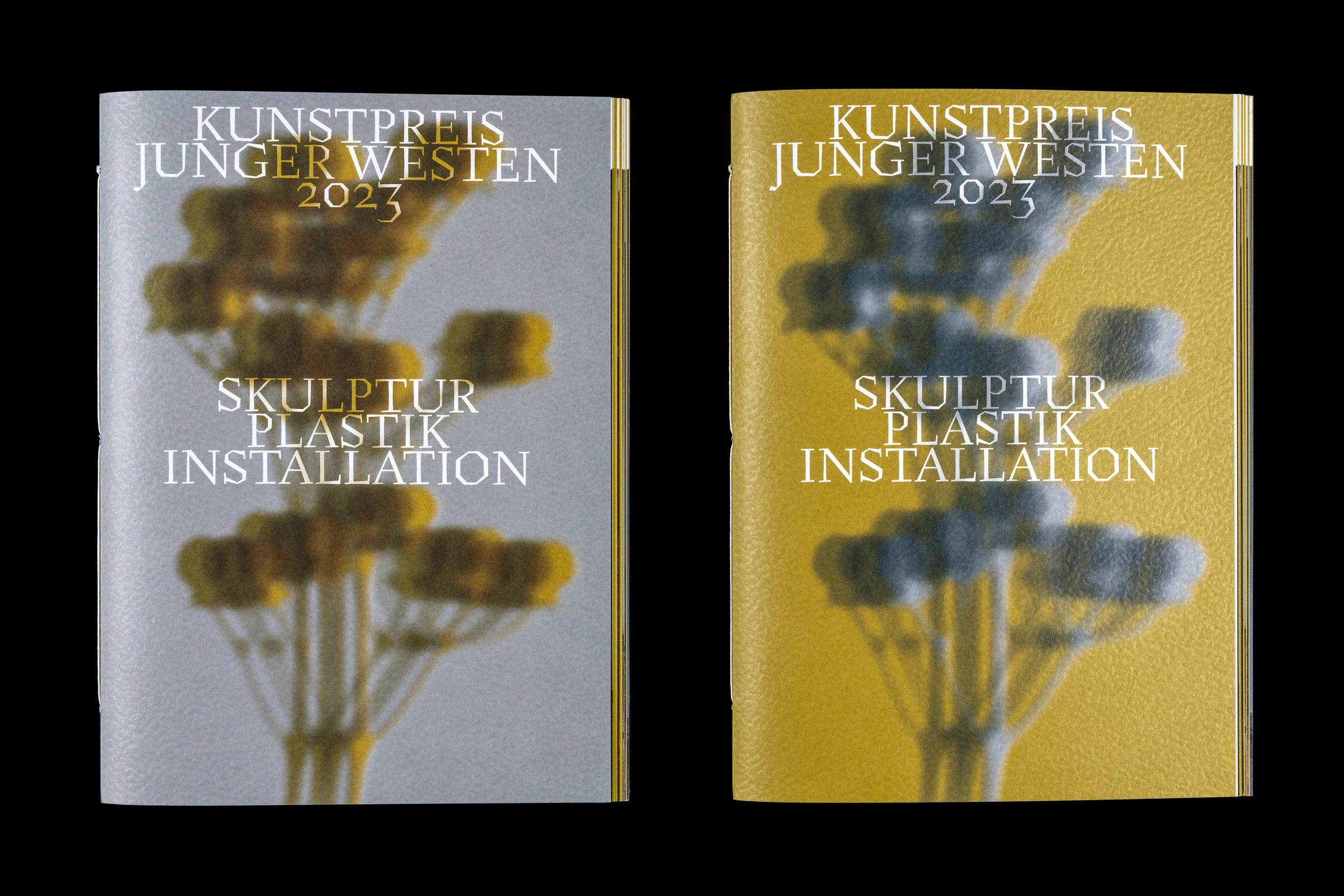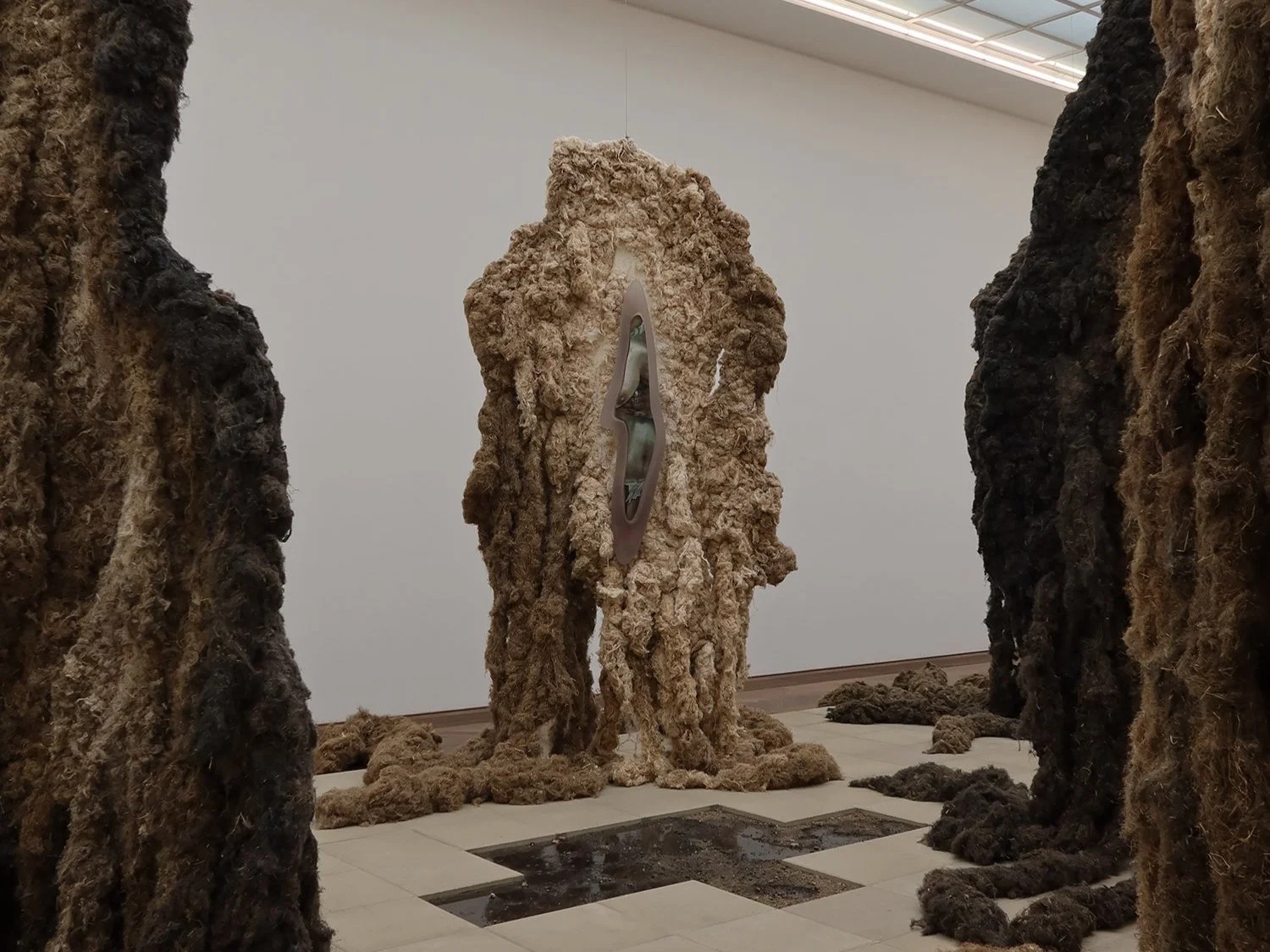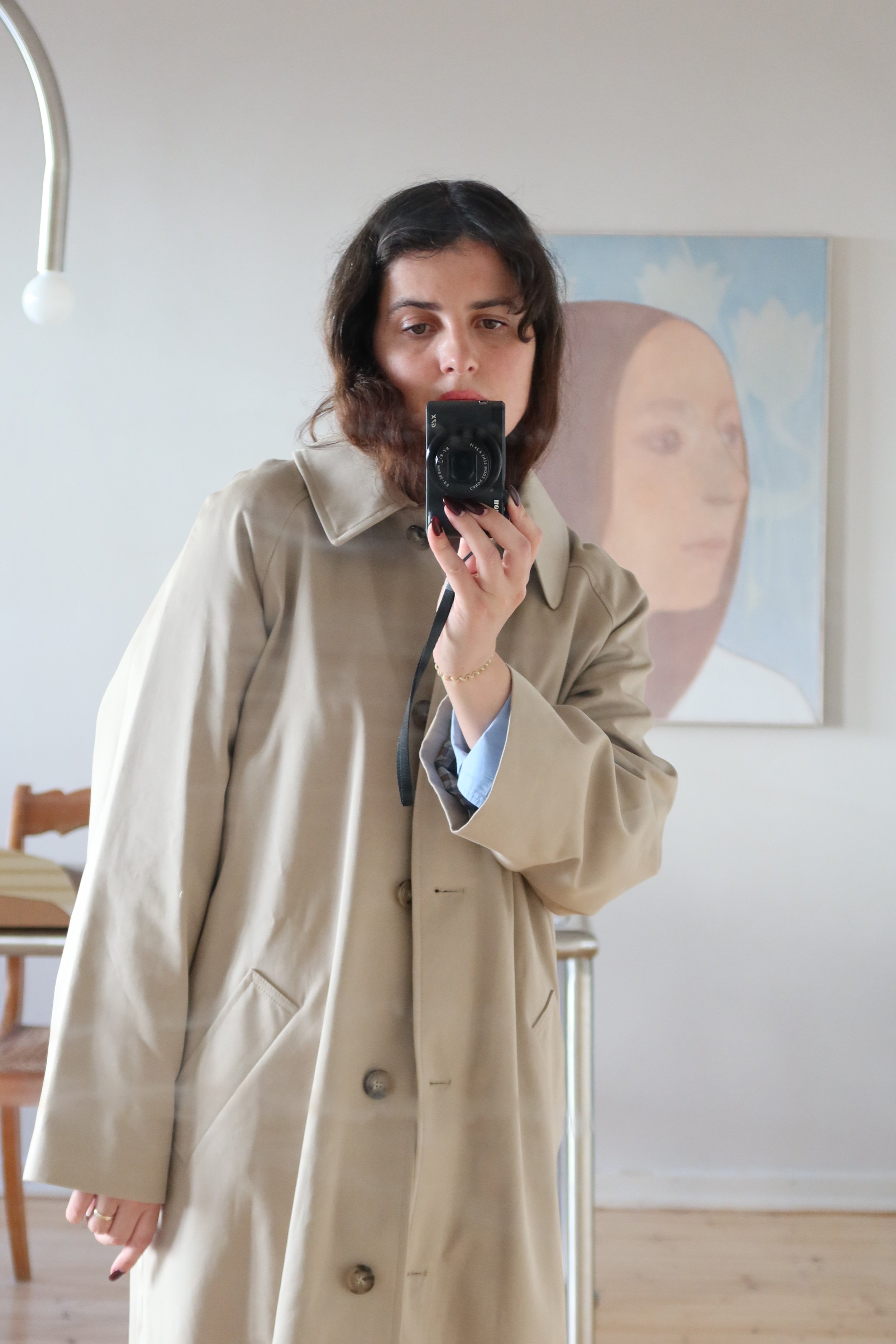Saskia Höfler-Hohengarten
Saskia, please introduce yourself:
I am Saskia, the founder of the art platform KUBAPARIS, the studio KUBAPARIS and the design studio Studio Saskia Hoefler. I work as a designer, “curator” of KUBAPARIS and quasi artfluencer via my two Instagram accounts @kubaparis and @saskiahoefler.
Artwork Fatma Güdu, Desk Studio Kuhlmann, Photo © Saskia Höfler-Hohengarten
#1 You founded KUBAPARIS eleven years ago. What was your motivation and idea behind it back then?
The initial motivation was to design a magazine. My co-founder at the time, Amelie gr. Darrelmann, an art historian by training, and I, then still studying and active in the Berlin art scene, shared a common passion for art. We quickly realized that there was a lack of a magazine that presented the works of up-and-coming artists - artists who were still studying or had just graduated. We wanted to put their work and their personalities in the spotlight and offer them a stage. So we developed the concept, devised a communication strategy, had a website programmed and set up an Instagram account.
KUBAPARIS (Design Studio Saskia Hoefler & Studio kela-mo, photo © Studio kela-mo)
#2 As a young woman starting your own business, where did you encounter obstacles and how did you manage to overcome them?
I wouldn't call them real obstacles, but rather a few negative experiences. KUBAPARIS thrives on exchanges with people and constant dialog. Wherever people meet, misunderstandings and disappointed expectations inevitably arise.
My biggest challenge as a founder was setting boundaries, being clear about my goals and not overstepping my own boundaries out of a need for harmony. In recent years, I have learned to say “no” sometimes, to reject commissions and to demand the right price for my work.
#3 What would you now like to pass on to your younger self, who has just finished her studies?
To be honest - and this is a pretty nice realization - I would do most things the same way again. Perhaps I would listen more to my gut feeling and let myself be made less insecure.
Kunstpreis Junger Westen (Design Studio Saskia Hoefler & Studio kela-mo, photo © Studio kela-mo)
#4 KUBAPARIS is a platform for contemporary art and focuses on bringing attention to young, up-and-coming artists. How do you think the art scene has changed since you started KUBAPARIS?
I have the impression that significantly more young female artists are visible today. The barrier to showing positions that are not yet permanently represented in a gallery, have only been in the industry for a short time or do not have a classic study path behind them has become lower. More female positions are being presented and many cultural institutions are now run by women. Instagram enables female artists to act more independently and build their own platform and community.
At the same time, traditional galleries seem to be doing worse. Many that were very important and relevant when KUBAPARIS was founded have downsized. The art and culture scene is currently affected by cutbacks and galleries are complaining about declining sales figures. For 2025, I hope that the barrier for collecting art will continue to sink, that there will be more investment in young artists and that female artists will become more independent.
#5 You travel a lot and visit various exhibitions and museums. Is there an exhibition that has particularly moved you over the years, and why?
I love visiting the Kunsthaus Bregenz. Peter Zumthor's architecture inspires me and the exhibitions there are always something very special for me. In 2019, I went to an exhibition by Miriam Cahn in which her charcoal drawings lay on the floor - this arrangement has stayed with me to this day. I was also deeply impressed by the exhibition “GROWTH” by Klára Hosnedlová at the Kunsthalle Basel. Another highlight this summer was the group exhibition “What Time Is Heaven” at the Fondation Beyeler. The interaction with the works, the interplay of epochs and artists across time and space, and the spontaneous, almost intuitive recombination of the works reminded me of my own approach to design and thought processes.
Klára Hosnedlová – GROWTH, Kunsthalle Basel, Photo © Saskia Höfler-Hohengarten
#6 You have a large following on the KubaParis Instagram account and share daily stories about art and global exhibitions. But your personal accounts on Instagram and TikTok also reach many people and are updated frequently. What role does social media play for you in your work and your private life?
Artwork Fatma Güdu, Photo © Saskia Höfler-Hohengarten
Social media plays a huge role for me. If you look at the positive sides, Instagram and TikTok are like a gateway to the whole world. They offer me the opportunity to discover people, their work and visions, to network and to get inspired. At the same time, I can give insights into my work and my life and promote the work of many artists and designers. These platforms offer a lot of freedom and self-determination - especially in a creative environment, the benefits are enormous. On some days, the KUBAPARIS account reaches up to 200,000 people, which means that the works and exhibitions can be viewed worldwide.
I'm currently experimenting with how much of myself I want to show and how I can combine my work with my passions, such as fashion or interior design. I'm trying out a lot of things on TikTok; it almost feels like a secret place - although it's not really. In conclusion, I can say that I definitely plan to expand social media for KUBAPARIS in 2025.
#7 How do you see your role as a graphic designer and an editor of an art magazine in today's society?
I decided early on not to do politics with KUBAPARIS. I don't express myself politically and I don't publish any political articles or posts. Instead, I concentrate on what I can do best: Showing art. I provide a platform for creators and artists to hopefully help shape and change culture. In these crazy and unsettling times, I hope to actively contribute to shaping the cultural landscape and make an impact through an independent platform. Art changes the way we look at the world - sometimes on a large scale, sometimes on a very small scale.
#8 How does your environment influence your work?
I love the exchange and dialog with people whose work I appreciate. That inspires and influences me.
Anne Imhof – Wish You Were Gay, Photo © Saskia Höfler-Hohengarten
#9 Three things that inspire you at the moment:
Always nature, walks.
WhatsApp conversations with my best friend,
and the moments in between - moments that are reassembled through the gaze and perception of others.
#10 What do you currently read, watch, listen to?
I have an app on my phone that allows me to listen to an infinite number of audio plays - I often listen to relaxing fantasy stories to fall asleep to. Lately I've been enjoying the movie “The Worst Person in the World” by Joachim Trier, as well as the series “Conversations with Friends” based on the novel by Sally Rooney.
Photo Credits: © Saskia Höfler-Hohengarten, © Studio kela-mo
Interview by Emily Paefgen

